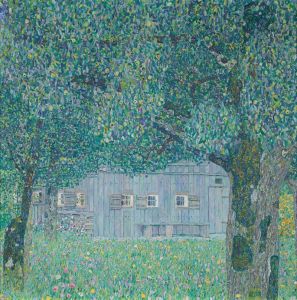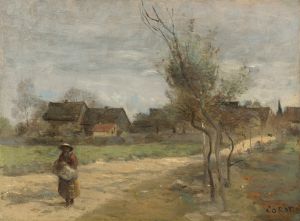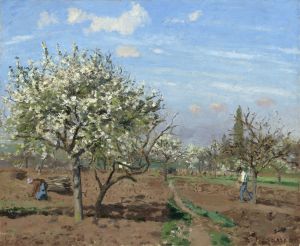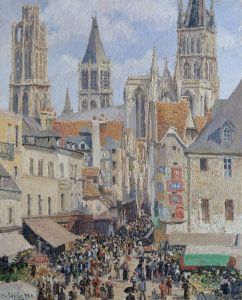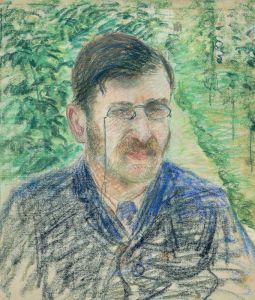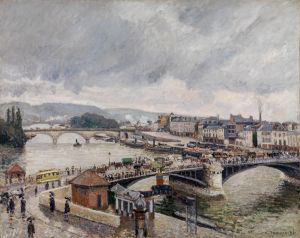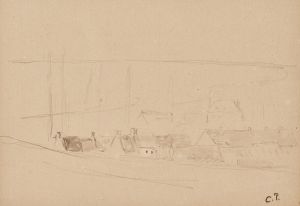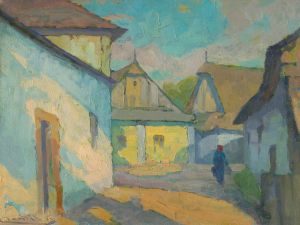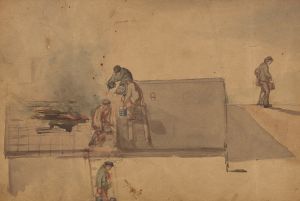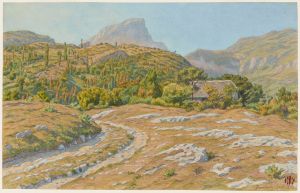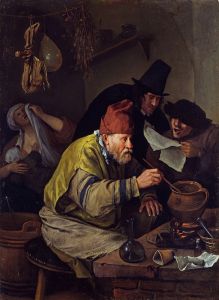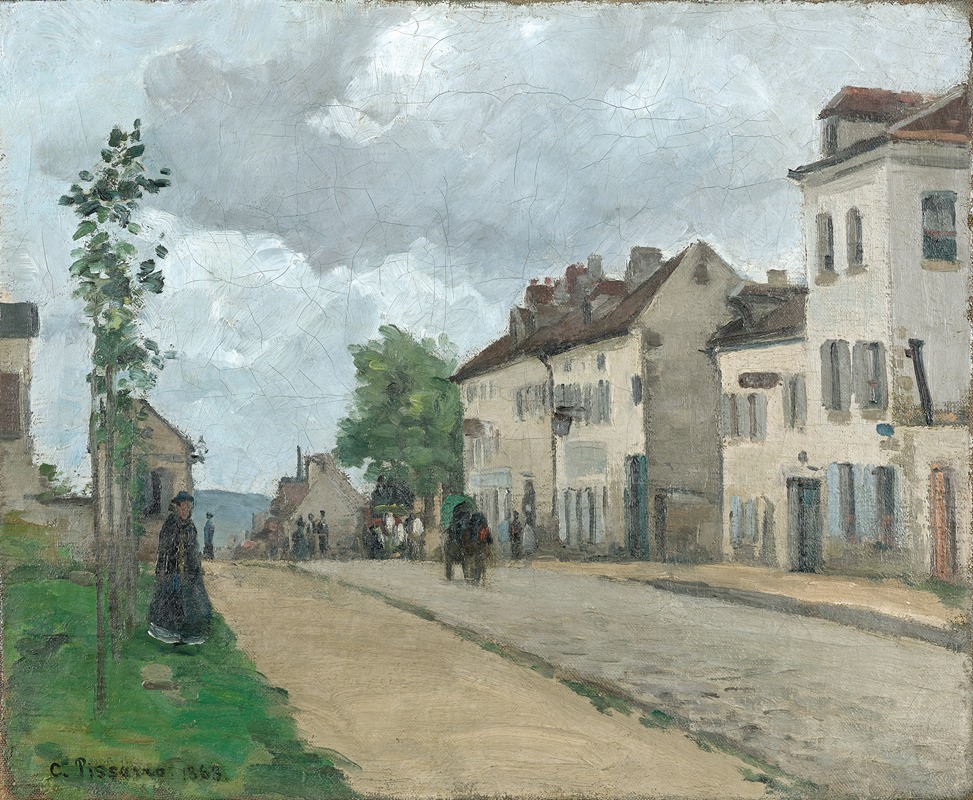
Straße in Pontoise
A hand-painted replica of Camille Pissarro’s masterpiece Straße in Pontoise, meticulously crafted by professional artists to capture the true essence of the original. Each piece is created with museum-quality canvas and rare mineral pigments, carefully painted by experienced artists with delicate brushstrokes and rich, layered colors to perfectly recreate the texture of the original artwork. Unlike machine-printed reproductions, this hand-painted version brings the painting to life, infused with the artist’s emotions and skill in every stroke. Whether for personal collection or home decoration, it instantly elevates the artistic atmosphere of any space.
"Straße in Pontoise" (Street in Pontoise) is a painting by the renowned French Impressionist artist Camille Pissarro. Created in 1879, this artwork is a quintessential example of Pissarro's dedication to capturing the essence of rural and suburban life in France during the late 19th century. Pissarro, a pivotal figure in the Impressionist movement, was known for his innovative approaches to capturing light and atmosphere, and "Straße in Pontoise" is no exception.
Camille Pissarro was born on July 10, 1830, on the island of St. Thomas in the Danish West Indies. He moved to Paris in 1855, where he became deeply involved in the burgeoning Impressionist movement. Pissarro's work is characterized by his commitment to painting en plein air, or outdoors, which allowed him to observe and depict the changing qualities of natural light and weather conditions directly onto the canvas.
Pontoise, a commune in the northwestern suburbs of Paris, was a significant location for Pissarro. He lived and worked there for several years, finding inspiration in its picturesque landscapes and everyday scenes. "Straße in Pontoise" reflects Pissarro's interest in the interplay between human activity and the natural environment. The painting depicts a quiet street scene, capturing the simplicity and tranquility of life in a small town.
In "Straße in Pontoise," Pissarro employs a soft, muted palette, typical of his work during this period. The brushwork is loose and fluid, a hallmark of Impressionism, which allows the viewer to experience the scene as a fleeting moment in time. The composition is balanced, with a careful arrangement of architectural elements and figures that guide the viewer's eye through the painting. Pissarro's attention to detail in the textures of the buildings and the play of light and shadow on the street demonstrates his mastery of the Impressionist technique.
Pissarro's work was instrumental in the development of Impressionism, and he was a mentor to several other prominent artists, including Paul Cézanne and Paul Gauguin. Despite facing initial criticism and rejection from the traditional art establishment, Pissarro and his fellow Impressionists persevered, eventually gaining recognition and acclaim for their innovative approaches to art.
"Straße in Pontoise" is representative of Pissarro's broader oeuvre, which often focused on rural and suburban scenes, capturing the beauty and simplicity of everyday life. His work provides valuable insight into the social and cultural changes occurring in France during the late 19th century, as urbanization and industrialization began to transform the landscape.
Today, Camille Pissarro is celebrated as one of the founding figures of Impressionism, and his paintings are held in high regard by art historians and enthusiasts alike. "Straße in Pontoise" remains an important piece within his body of work, exemplifying his skill in capturing the ephemeral qualities of light and atmosphere, as well as his deep appreciation for the natural world and human experience.





